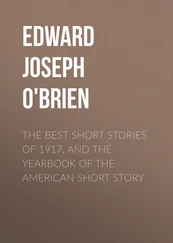Last week, a woman named Rebecca Stamos, somebody I’d never heard of, called me to say that our mutual friend Tony Fido was no more. He’d killed himself. As she put it, “He took his life.”
For two seconds, the phrase meant nothing to me. “Took it,” I said….Then, “Oh, my goodness.”
“Yes, I’m afraid he committed suicide.”
“I don’t want to know how. Don’t tell me how.” Honestly, I can’t imagine why I said that.
A week ago Friday — nine days ago — the eccentric religious painter Tony Fido stopped his car on Interstate 8, about sixty miles east of San Diego, on a bridge above a deep, deep ravine, and climbed over the railing and stepped into the air. He mailed a letter beforehand to Rebecca Stamos, not to explain himself but only to say goodbye and pass along the phone numbers of some friends.
Sunday I attended Tony’s memorial service, for which Rebecca Stamos had reserved the band room of the middle school where she teaches. We sat in a circle, with cups and saucers on our laps, in a tiny grove of music stands, and volunteered, one by one, our memories of Tony Fido. There were only five of us: our hostess, Rebecca, plain and stout, in a sleeveless blouse and a skirt that reached down to her white tennis shoes; myself in the raiment of my order, the blue blazer, khaki chinos, tasseled loafers; two middle-aged women of the sort to own a couple of small obnoxious dogs — they called Tony “Anthony”; a chubby young man in a green jumpsuit — some kind of mechanic — sweating. Tony’s neighbors? Family? None.
Only the pair of ladies who’d arrived together actually knew each other. None of the rest of us had ever met before. These were friendships, or acquaintances, that Tony had kept one by one. He’d met us all in the same way — he’d materialized beside us at an art museum, an outdoor market, a doctor’s waiting room, and he’d begun to talk. I was the only one of us even aware he devoted all his time to painting canvases. The others thought he owned some kind of business — plumbing or exterminating or looking after private swimming pools. One believed he came from Greece; others assumed Mexico, but I’m sure his family was Armenian, long established in San Diego County. Rather than memorializing him, we found ourselves asking, “Who the hell was this guy?”
Rebecca had this much about him: while he was still in his teens, Tony’s mother had killed herself. “He mentioned it more than once,” Rebecca said. “It was always on his mind.” To the rest of us this came as new information.
Of course, it troubled us to learn that his mother had taken her own life, too. Had she jumped? Tony hadn’t told, and Rebecca hadn’t asked.
With little to offer about Tony in the way of biography, I shared some remarks of his that had stuck in my thoughts. “I couldn’t get into ritzy art schools,” he told me once. “Best thing that ever happened to me. It’s dangerous to be taught art.” And he said, “On my twenty-sixth birthday, I quit signing my work. Anybody who can paint like that, have at it, and take the credit.” He got a kick out of showing me a passage in his hefty black Bible — first book of Samuel, chapter 6?—where the idolatry of the Philistines earns them a plague of hemorrhoids. “Don’t tell me God doesn’t have a sense of humor.”
And another of his insights, one he shared with me several times: “We live in a catastrophic universe — not a universe of gradualism.”
That one had always gone right past me. Now it sounded ominous, prophetic. Had I missed a message? A warning?
The man in the green jumpsuit, the garage mechanic, reported that Tony had plunged from our nation’s highest concrete-beam bridge down into Pine Valley Creek, a flight of four hundred and forty feet. The span, completed in 1974 and named the Nello Irwin Greer Memorial Bridge, was the first in the United States to be built using, according to the mechanic, “the cast-in-place segmental balanced cantilever method.” I wrote it down on a memo pad. I can’t recall the mechanic’s name. His breast-tag said “Ted,” but he introduced himself as someone else.
Anne and her friend, whose name also slipped past me — the pair of women — cornered me afterward. They seemed to think I should be the one to take final possession of a three-ring binder full of recipes that Tony had loaned them — the collected recipes of Tony’s mother. I determined I would give it to Elaine. She’s a wonderful cook, but not as a regular thing, because nobody likes to cook for two. Too much work and too many leftovers. I told them she’d be glad to get the book.
The binder was too big for any of my pockets. I thought of asking for a bag, but I failed to ask. I didn’t know what to do with it but carry it home in my hands and deliver it to my wife.
Elaine was sitting at the kitchen table, before her a cup of black coffee and half a sandwich on a plate.
I set the notebook on the table next to her snack. She stared at it. “Oh,” she said. “From your painter.” She sat me down beside her and we went through the notebook page by page, side by side.
Elaine: she’s petite, lithe, quite smart; short gray hair, no makeup. A good companion. At any moment — the very next second — she could be dead.
I want to depict this book carefully, so imagine holding it in your hands, a three-ring binder of bright-red plastic weighing about the same as a full dinner plate, and now setting it in front of you on the table. When you open it, you find a pink title page, “Recipes. Caesarina Fido,” covering a two-inch thickness of white college-ruled three-hole paper, the first inch or so the usual — casseroles and pies and salad dressings, every aspect of breakfast, lunch, and supper, all written in blue ballpoint. Halfway through, Tony’s mother introduces ink of other colors, mostly green, red, and purple, but also pink, and a yellow that’s hard to make out; and, as these colors come along, her penmanship enters a kind of havoc, the letters swell and shrink, several pages big and loopy, leaning to the right, and then, for the next many pages, leaning to the left, then back the other way; and here, where these wars and changes begin, and for better than a hundred pages, all the way to the end, the recipes are only for cocktails. Every kind of cocktail.
Earlier that afternoon, as Anne handed the binder over to me at Tony’s memorial, she made a curious remark. “Anthony spoke very highly of you. He said you were his best friend.” I thought it was a joke, but Anne meant this seriously.
Tony’s best friend? I was confused. I’m still confused. I hardly knew him.
When I returned to New York City to pick up my prize at the American Advertisers Awards, I’m not sure I expected to enjoy myself. But on the second day, killing time before the ceremony, walking north through midtown in my dark ceremonial suit and trench coat, skirting the park, strolling south again, feeling the pulse and listening to the traffic noise rising among high buildings, I had a homecoming. The day was sunny, fine for walking, brisk, and getting brisker — and, in fact, as I cut a diagonal through a little plaza somewhere above Fortieth Street, the last autumn leaves were swept up from the pavement and thrown around my head, and a sudden misty quality in the atmosphere above seemed to solidify into a ceiling both dark and luminous, and the passersby hunched into their collars, and, two minutes later, the gusts settled into a wind, not hard but steady and cold, and my hands dove into my coat pockets. A bit of rain speckled the pavement. Random snowflakes spiraled in the air. All around me, people seemed to be evacuating the scene, while across the square a vendor shouted that he was closing his cart and you could have his wares for practically nothing, and for no reason I could have named I bought two of his rat dogs with everything and a cup of doubtful coffee and then learned the reason — they were wonderful. I nearly ate the napkin. New York!
Читать дальше

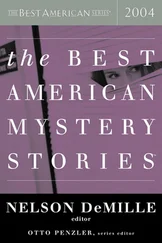

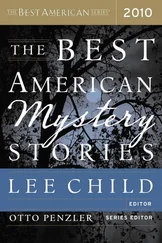
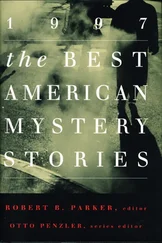

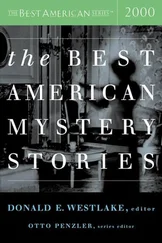

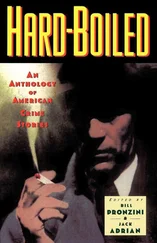
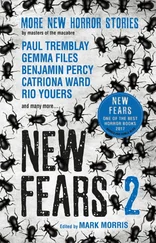
![Женя Джентбаев - neo futura [stories]](/books/692472/zhenya-dzhentbaev-neo-futura-stories-thumb.webp)
